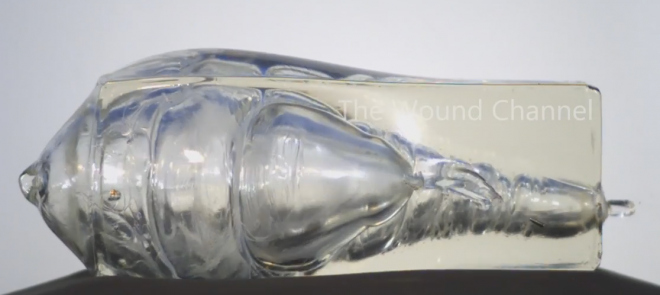If you had any doubt at all about the terminal performance of the U.S. Army’s new M855A1 Enhanced Performance Round before, prepare yourself. YouTube ammo tester The Wound Channel has partnered with Aimed Research, who is providing the cameras needed to take ultra-high-speed video of bullets in flight. See the video below of the M855A1 EPR doing its thing to a block of Clear Ballistics gel under the watchful eye of a Phantom high speed camera:
Needless to say, the M855A1 round gives exceptional performance in gelatin for a round of this size – exactly what we’d expect from a round that was the result of one of the most extensive small arms ballistics research programs in recent memory. The Enhanced Performance Round offers the incredibly short neck that ballisticians have been chasing for decades now, while retaining excellent penetration due to its “arrowhead” penetrator and copper slug. A wide terminal cavity is given by the resulting immediate fragmentation and deposition of energy into the block, which then collapses back in on itself. This creates one of the strangest phenomena I’ve ever seen in gel: A secondary temporary cavity caused by a fuel-air ignition. William and I discussed what may be happening here; his thoughts are below:
The flash/explosion in the gel hasn’t been very well explained so far. The best explanation I have is that the hot bullet vaporizes some of the gel (which is flammable) and between the friction, heat of the bullet, and air being sucked into the temporary stretch cavity, as the TSX collapses it acts like a diesel engine and compresses the mixture of heated gel vapor and air until it explodes. You can see the exhaust gas exiting the entrance hole. I don’t think that the air can be pushed out as fast as it is sucked in, and without a place to escape the pressure inside that bubble is tremendous as it collapses. Some people mistakenly identify this as sonoluminescence, but that is just a flash of light not an actual explosion/burning. …That phenomena would not happen in tissue, I don’t think.
 Your Privacy Choices
Your Privacy Choices
